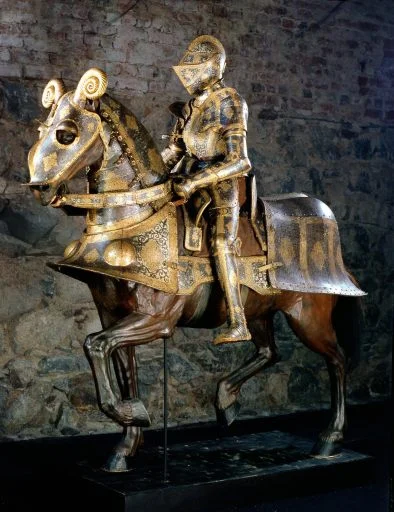Odin of Ossetia wrote:
Also, the real knights-proper do not appear until the 1100's, before that they can be described as mounted warriors or even as "proto-knights." Azi, I think you are mixing up the emergence of feudalism with the knights.
.
.
.
Also, the Varangians for the most part were a bunch of Swedish trailer trash, and in the later times, especially after 1066, many of the Varangian Guards were Anglo-Saxons.
The Poles soundly defeated a Rus army made up of the Novogrodians and Varangians at the Battle of the Bug River in 1018. Poles suffered very few casualties while their enemies were destroyed.
You can't draw a real line between real knights and proto knights. You are right for the word "Ritter", german word for knight appeared first in 11th century, the social status in 12th century. The first knights in military term appeared during 8th century in the realm of the Franks during Carolingian age...
https://en.wikipedia.org/wiki/Knight
In the Early Medieval period any well-equipped horseman could be described as a knight, or miles in Latin.[19] The first knights appeared during the reign of Charlemagne in the 8th century.[20][21][22] As the Carolingian Age progressed, the Franks were generally on the attack, and larger numbers of warriors took to their horses to ride with the Emperor in his wide-ranging campaigns of conquest. At about this time the Franks increasingly remained on horseback to fight on the battlefield as true cavalry rather than mounted infantry, with the discovery of the stirrup, and would continue to do so for centuries afterwards.
By the way..."knight" is the german word for servant (Knecht)

The german word "Ritter" means "Reiter", nothing else than horseman. Refering to the Roman Empire, were only nobles and rich people were able to ride a horse, the so called "equites" (horseman) riding the "equus" (horse). Warfare with horseman was so uncommon for the Roman Empire that they buyed mercenaries from other parts of Europe, trained in mounted warfare...most were germans and celts, of course other "barbaric" tribes. The french word is "chevalier", derived from the italian word "cavaliere" (horseman). From chevalier is word "chivalrous" derived and later the word cavalry. The US-Army still use the word cavalry in some division and regiment names, like "1st Cavalry Division ". ;D LOL
Later in 12th century the knight was social rank, addition to the military role. For this you are correct! All of our ideas about knights refer to this era and later...in military terms it's not correct. Yes, most knights were not really chivalrous.
As you can see in your video the evolution of armour was similar in west and east europa till 13th century....than something occured...
The Mongolian Invasion! Soldiers in heavy armour were hard to kill, but they couldn't catch and kill Mongolians in a fight...Mongolians were able to attack with bows, to draw back and fire at the same time in backward direction...later attack with lance and swords. These tactics made the Mongols the ultimate mounted soldiers. Druzhina with their more or less heavy armour, similar to western knights, were not able to fight Mongolians in open field. Western armies proofed really bad against the Mongols.
So...that's the reason why east european armies sacrificed armour for mobility. Best example are Cossacks beginning from 16th century...orthodox slaws with the lifestyle of asian steppe peoples. Speed and mobility preferred over armour protection. If Kievan Rus was more unified during Mongol Invasion, maybe they could have defeated Mongol Empire...but they were more interested in feuds and killing each other during the time (Mongols had really problems to besiege european cities and castles).
Yes maybe the Poles defeated a army of Novgorod..so what?! Novgorod defeated 2 times easy a knight army of the Teutonic Order. Poland was a mighty country during the Middle Ages, like Sweden and Denmark. Sometimes you win, sometimes you lose...if Druzhina performed historical so bad, all Russians would be catholic now and speak german or polish. By the way polish knights were called "Druzhina".









